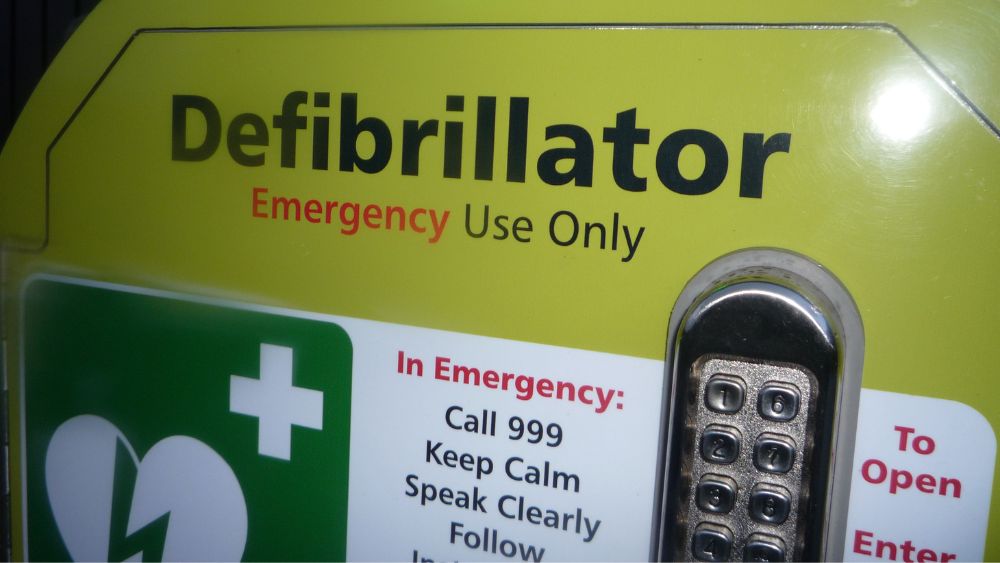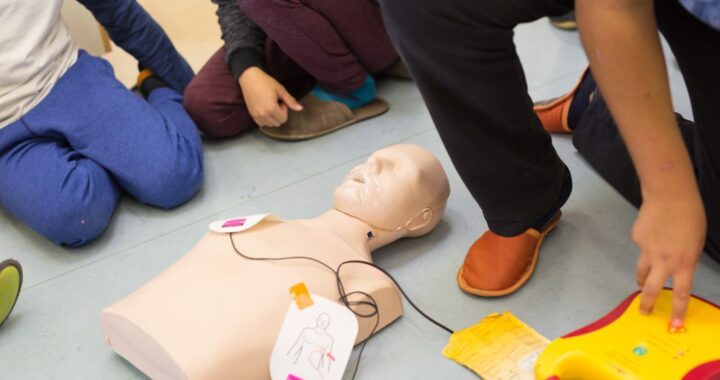Training AEDs are devices that are designed to provide life-saving treatments for sudden cardiac arrest (SCA). While AEDs are becoming more and more commonplace, it is still important to get the training you need to properly use one.
Many places offer AED training, but not all of them are created equal. It is important to find a reputable source of training, like that from Lightning Training Solutions, so that you can be sure you are getting the most accurate and up-to-date information.
We offer courses that can help you learn how to use an AED properly. These courses range from online classes to in-person workshops. No matter what your level of experience or expertise is, there is a course that can help you.
Types of AEDs Available
AED stands for ‘Automatic External Defibrillator’. These devices are portable and can be used by anyone, with or without medical training.
AEDs work by delivering an electric shock to the heart. These shocks can help to restore a normal rhythm in the heart and save someone’s life.
But what types of AEDs exist? Well, there are two main types of AED; automatic and manual.
It’s worth noting that there is a large list of AED manufacturers! However, all AEDs work the same and are just as effective – no matter the brand.

Public AEDs & When To Use One
When someone suffers sudden cardiac arrest, an AED and a manual defibrillator both serve the same purpose. They are used to shock the heart back to a normal rhythm. Although these machines are very similar, they do have some differences.
An Automated External Defibrillator is found in public access settings. It is designed to be used by non-medical personnel.
When someone, for example a member of the public, suffers sudden cardiac arrest, the chances are highest if a bystander is able to provide CPR combined with an AED before the ambulance arrives. Their chances of survival greatly increases (around 70% in fact!).
DID YOU KNOW?
Immediate CPR and defibrillation can more than double the chances of survival – however public access defibrillators are used in less than one in 10 of cases.
An AED will give the user step-by-step instructions when the device is turned on and will only deliver a shock if it is needed. The person using the AED just needs to follow the step-by-step instructions, which are simple to follow, and the AED will do the rest.
These instructions use a combination of verbal and visual prompts (commonly via LED lights) to help the person at the scene.

Auto AED’s
Automatic AEDs are the most common type. As the name suggests, they do not require any input from the user; they will automatically analyse the heart rhythm and, if needed, deliver a shock.
They are preferred for AED training because they are so easy to use. However, they can be more expensive than manual AEDs.
Manual AED’s
Manual AEDs are less common but are still in use in some parts of the world.
With these devices, the user must first manually analyse the heart rhythm before deciding whether or not to deliver a shock.
Which is best?
There is no definitive answer as to which type of AED is best. It really depends on the individual situation and what is available.
Some people might prefer an automatic AED because it removes the need for them to make life-or-death decisions in a high-pressure situation. Others might prefer a manual AED because it gives them more control over the situation.
However, we highly recommend an Automated External Defibrillator.
Both types of AEDs can be effective in saving lives. It is really up to the trainee/responder to decide which type they are most comfortable with.

Provision and Use of Work Equipment Regulations 1998 (PUWER)
- Suitable for the intended use
- Safe for use, maintained in a safe condition and inspected to ensure it is correctly installed and does not subsequently deteriorate
- Used only by people who have received adequate information, instruction and training
How to Use an AED
Once you have decided which type of AED you want to use, it is time to learn how to use it.
If you are using an automatic AED, the process is very simple. Once you have turned on the device, all you need to do is apply the pads to the bare chest of the person in need and let the machine do its work.
If you are using a manual AED, the process is slightly more complex. You will need to first analyse the heart rhythm and then decide whether or not to deliver a shock.
This can be done by following the instructions on the AED itself or by consulting with someone who is trained in its use.
Either way, it is important to make sure that you are familiar with both processes before you find yourself in a situation where you need to use an AED.

The Importance of AED Training
Using an AED is not difficult, but it is still important to get the training you need to do it properly.
AEDs are designed to be used by anyone, with or without medical training. However, it is still a good idea to get some training before you try to use one.
Many places offer AED training, such as right here at Lightning Training Solutions.
Our AED courses are made up of online classes as well as in-person workshops. No matter what your level of experience or expertise is, we have a course that can help you.
Each of our courses is designed to give you the knowledge and skills you need to use an AED properly. We also offer certification, as part of the course you are enrolled on, so that you can show potential employers that you are qualified to use an AED.
If you are interested in getting AED training, we encourage you to check out our courses today. With our help, you can be prepared to save a life.

How Much Does AED Training Cost?
We carry out AED training as part of all our first aid training courses, except Canine courses, which means that there is no extra cost per se. This also includes our Emergency First Aid Training.
With basic life support training, you’ll feel more confident in knowing how to act if someone has a cardiac arrest. You will learn the ins-and-outs of operating a defibrillator and CPR techniques that could potentially save their lives!
Here is a list of courses where AED training is offered as part of the training programme:
- First Aid at Work
- Emergency First Aid at Work
- Mental Health First Aid
- Paediatric First Aid
- First Aid Refresher Courses
- Fire Safety Training
- Care Sector Training
FAQs
You should use a defibrillator when someone has a sudden cardiac arrest and their heart stops beating in a normal rhythm.
Lightning Training Solutions offers AED training as part of all our first aid courses, except our Canine training courses, that can help you to learn how to use a defibrillator properly.
A defibrillator works by delivering an electric shock to the heart. This can help to restore a normal rhythm in the heart and save someone’s life.
No, there is no difference between an AED and a defibrillator. They are both devices that deliver an electric shock to the heart in order to restart it.
Yes, we always recommend getting some training before using a defibrillator. This will help you to use the device properly and increase your chances of saving someone’s life.
Lightning Training Solutions offers AED training courses that can help you to learn how to use a defibrillator properly.
